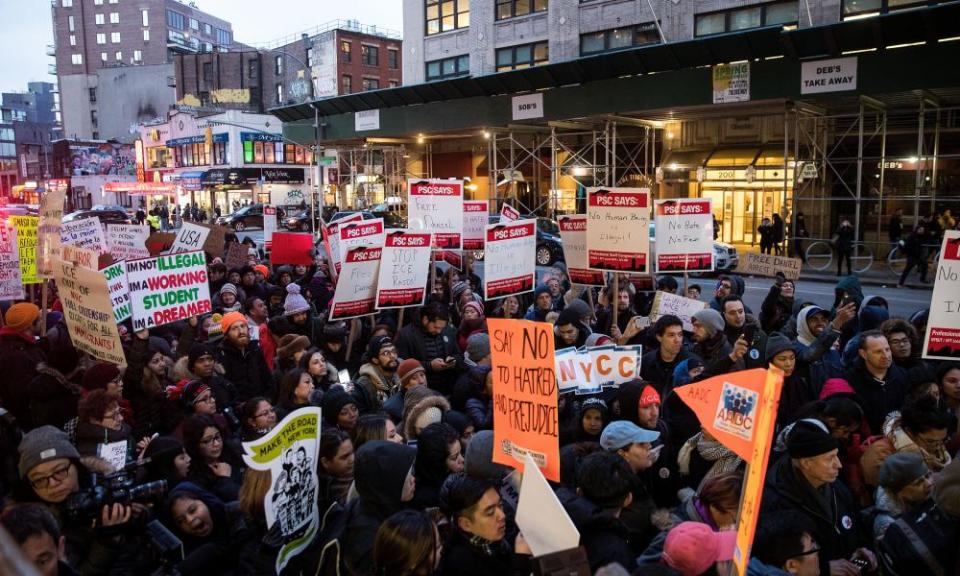Anti-Muslim groups have tripled in number. But this isn’t just a US problem | Mary O’Hara

Crimes perpetrated on the basis of hate are nothing new. They are always with us. The levels, and the groups targeted, tend to ebb and flow with the political tides. However, the recent waves of rightwing populism in the UK and elsewhere have unleashed a hail of such incidents and emboldened those who provoke or endorse them.
In the US, where each new day brings instability and fear under a presidency that has made some of the most offensive tropes around race and immigration mainstream, the latest annual analysis from the Southern Poverty Law Center (SPLC) on “hate groups” makes for stark reading. They are defined as having “beliefs or practices that attack or malign an entire class of people, typically for their immutable characteristics”. The SPLC has tracked hate crimes and groups for decades. Its latest report reveals that the number of hate groups rose for the second consecutive year in 2016.
According to the SPLC, there were 917 active hate groups in 2016 (the organisation specifies what it defines as “active” groups based on criteria including marches, publishing and recruitment drives), up from 892 in 2015. The most dramatic change was in the category for anti-Muslim groups, which tripled in number year-on-year from 34 in 2015 to 101. The report’s author, Mark Potok, points out that the total hate group figure is most likely an underestimate as they have shifted operations online, making tracking more challenging.
None of this occurred in a vacuum. It is set against a backdrop of (now highly visible) rightwing populist movements in the US and beyond. The analysis concludes that a key factor in the most recent upswing in the number of groups was that Trump’s campaign “electrified” the radical right, who “saw in him a champion of the idea that America is fundamentally a white man’s country”. Threats of Muslim bans and building a border wall with Mexico are two of the campaign pledges that fed into this.
But it’s not just that hate groups have been bolstered. As with Britain and Brexit, hate crime in the US has seen leaps, too. In the days immediately following the 2016 presidential election the SPLC reported a wave of hate crimes and bias-related incidents around the country – 1,094 in the first 34 days after 9 November – according to its own count. Potok concludes that this was clearly tied directly to Trump’s victory, with more than a third of these early incidents involving references either to his remarks about grabbing women’s genitals or the “Make America Great Again” slogan.
One notable observation in the analysis is a decline in “real world” activities like rallies and violence organised by hate groups because, as Potok writes: “There hardly seemed a reason to organise their own rallies when extremists could attend a Trump event filled with just as much anti-establishment vitriol as any extremist rally.”
There are numerous parallels between the UK and the US, Potok says. Not just for raw statistics on rises in hate incidents, but also in terms of the forces propelling them. Among these is a general backdrop epitomised by decades of globalisation, coupled with rising economic inequality and insecurity, but more specifically the deliberate and strategic stoking of fears among parts of the population susceptible to populist messages by political opportunists.
The scapegoating of groups including religious minorities and immigrants is a common feature of Brexit Britain and the current US political landscape. But reports like this one tell us that the fuelling of such hate should be countered at every possible opportunity.

 Yahoo News
Yahoo News 